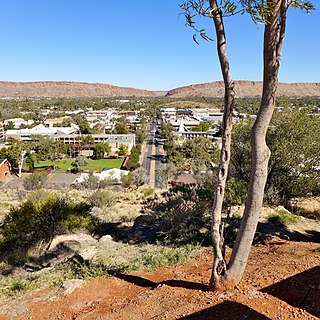
Alice Springs is a town in the Northern Territory, Australia; it is the third-largest settlement after Darwin and Palmerston. The name Alice Springs was given by surveyor William Whitfield Mills after Alice, Lady Todd, wife of the telegraph pioneer Sir Charles Todd. Known colloquially as The Alice or simply Alice, the town is situated roughly in Australia's geographic centre. It is nearly equidistant from Adelaide and Darwin.
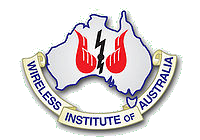
The Wireless Institute of Australia (WIA) was formed in 1910, and is the first and oldest national amateur radio society in the world. It represents the amateur radio operators of Australia as the AR "peak body" in dealings with the Australian Communications and Media Authority (ACMA), the authority under the government of Australia that administers communications within and external to Australia. The WIA publishes a bi-monthly journal for its membership called Amateur Radio. The organisation is the national society representing Australia in the International Amateur Radio Union. The WIA holds regular meetings with the ACMA to inform the Authority on matters concerning the Australian amateur radio community.

The Old Melbourne Gaol is a former jail and current museum on Russell Street, in Melbourne, Victoria, Australia. It consists of a bluestone building and courtyard, and is located next to the old City Police Watch House and City Courts buildings, and opposite the Russell Street Police Headquarters. It was first constructed starting in 1839, and during its operation as a prison between 1845 and 1924, it held and executed some of Australia's most notorious criminals, including bushranger Ned Kelly and serial killer Frederick Bailey Deeming. In total, 133 people were executed by hanging. Though it was used briefly during World War II, it formally ceased operating as a prison in 1924; with parts of the jail being incorporated into the RMIT University, and the rest becoming a museum.
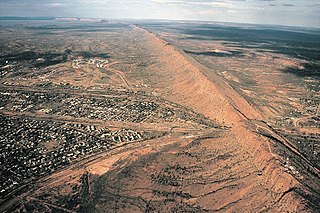
The Heavitree Gap, or Ntaripe in the Arrernte language, is a water gap in the Northern Territory of Australia in the MacDonnell Ranges. It is the southern entrance to the city of Alice Springs and in addition to the Todd River it carries the main road and rail access to the south.

The National Road Transport Hall of Fame is an Australian transport museum in Alice Springs, Northern Territory, owned by the Road Transport Historical Society and opened in 1995. The Old Ghan Heritage Railway and Museum, which the society also operates, is on the adjoining site.
Helen Springs Station more commonly known as Helen Springs is a pastoral lease that operates as a cattle station.

The Alice Springs Telegraph Station is located within the Alice Springs Telegraph Station Historical Reserve, four kilometres north of the Alice Springs town centre in the Northern Territory of Australia. Established in 1872 to relay messages between Darwin and Adelaide, it is the original site of the first European settlement in central Australia. It was one of twelve stations along the Overland Telegraph Line.
Patricia (Pat) Lyle Toole , was an Australian aviator. She was one of the first female commercial pilots in Australia and the first female commercial pilot in Papua New Guinea.
Molly Clark was a pastoral and tourism pioneer from Central Australia in the Northern Territory of Australia. She established the National Pioneer Women's Hall of Fame

Topsy Smith was an Arabana pioneer of Central Australia in the Northern Territory. She spent her life caring for Indigenous children at an institution known as The Bungalow in Alice Springs.
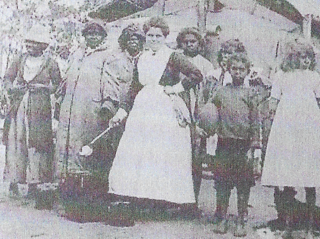
Ann Lock, better known as Annie Lock, was a missionary of the Australian Aborigines Mission,. She worked across Australia for nearly 35 years and played an important role in bringing the Coniston Massacre to national public attention.
Beatrice Mary Brumby or Beatrice Bell was a pioneering woman from Central Australia and northern South Australia who contributed significantly to the development of the pastoral and tourism industries.
Lulu Benstead was an Australian opera singer and performer.
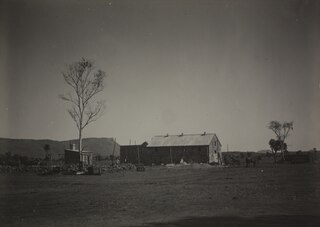
Stuart Town Gaol in Alice Springs, Northern Territory, Australia, located on 9 Parson Street, was constructed in 1907, when Alice Springs had a European population of approximately 30 people, and held its first prisoner in 1909. It is one of the earliest permanent buildings constructed in the town and the first government building. The gaol follows a simple design and was built, using local materials, by stonemason Jack Williams.

Adelaide House also known as Australian Inland Mission Hostel on the Todd Mall in Alice Springs was the first purpose built hospital to a design by the Reverend John Flynn and was completed in 1926. It now operates as a museum managed by Heritage Alice Springs Incorporated.

Gloria Ouida Lee or Siew Yoke Kwan, also known as Gloria Purdy-Lee was a Chinese-Australian miner. She was the daughter of Alice Springs Chinese Market gardener Ah Hong and his Western Arrernte wife Ranjika. Lee travelled between Australia and China and experienced discrimination because of her mixed parentage. She is included in the archive collection of the Women's Museum of Australia, formerly known as the National Pioneer Women's Hall of Fame. Her oral history is held at the National Library of Australia.
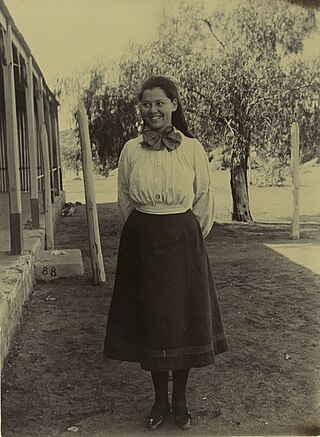
Winifred Doris Blackwell was an Australian memoirist. She was the co-writer of Alice on the Line.

Amelia Kunoth née Pavey was an Aboriginal Australian woman who developed well-known cattle stations in Central Australia, including Utopia, Bond Springs, Hamilton Downs and Tempe Downs.
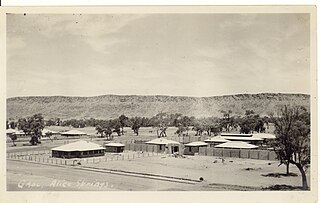
Her Majesty's Gaol and Labour Prison was a government run prison in Alice Springs in the Northern Territory which operated between 1938 and 1996. It was preceded by Stuart Town Gaol and replaced by the still operating Alice Springs Correctional Centre.














